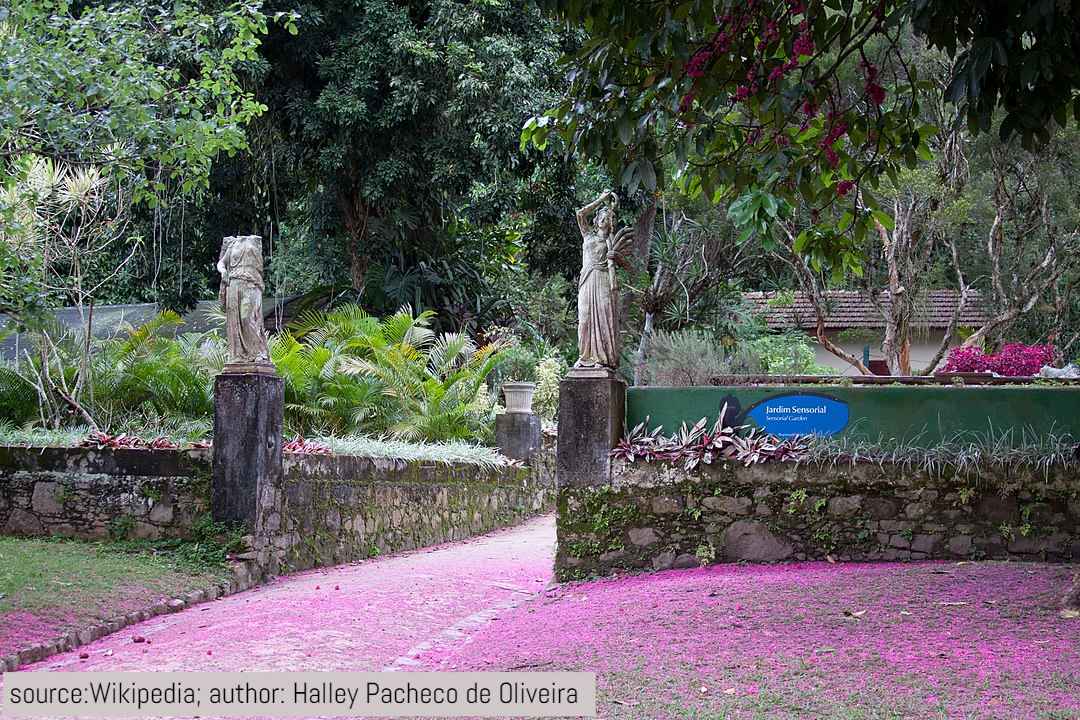Jardim Botânico
Share this attraction
Back

Jardim Botânico
Rio De Janeiro
Jardim Botânico - the most important information
The Rio de Janeiro Botanical Garden or Jardim Botânico is located at the Jardim Botânico district in the South Zone of Rio de Janeiro. The Botanical Garden shows the diversity of Brazilian and foreign flora. There are around 6,500 species (some endangered) distributed throughout an area of 54 hectares as well as numerous greenhouses. The garden also houses monuments of historical, artistic, and archaeological significance. There is an important research center, which includes the most complete library in the country specializing in botany with over 32,000 volumes.
History of Jardim Botânico
It was founded in 1808 by King John VI of Portugal. Originally intended for the acclimatization of spices like nutmeg, pepper, and cinnamon imported from the West Indies, the garden was opened to the public in 1822. The park is protected by the Patrimônio Histórico e Artístico Nacional and was designated as a biosphere reserve by UNESCO in 1992. Later on, the Botanical Garden organized an important research institute, which develops a wide range of botanical studies in Brazil. The institute has taxonomists who specialize in the identification and conservation of neotropical flora.
What to see in Jardim Botânico?
The area is huge (55 hectares open for a visit), meaning you always end up discovering something new. You can hardly see everything at once but give your best. When you go, make sure you visit at least these main attractions:
- Frei Leandro lake is a little lake full of water lilies. Here is always easy to observe different birds, since they come there to aliment themselves.
- The classic picture of Jardim Botanico is taken from Avenue of Imperial Palm Trees. These palm trees were planted more than 200 years ago, during the Portuguese Empire. The highest palms are up to 40m!
- At the end of the avenue, you´ll find the Fountain of the Muses. The fountain has figures of four Greek muses representing poetry, music, science, and art.
- The Medicinal Plants section is one of the most interesting ones. Here you can see and learn about the usage of different plants in medicine and in our everyday life. Expect to find for example coffee, salvia, tomato, garlic, different kind of herbs, and exotic plants from the Amazon, such as guaraná or jambú.
- The Orchid House has a collection of more than 2500 species of orchids. An explosion of colors smells, and aromas are a must-visit in Jardim Botanico.
Opening hours and tickets for Jardim Botânico
- Opening hours: On Mondays, this site works from 12 pm to 5 pm and from Tuesdays to Sundays from 8 am to 5 pm.
- Tickets: The price for foreign visitors is 10 USD, and for visitors who live in Brazil 4,25 USD. Entrance is free for children up to 5 years. Adults over 60 years old, disabled people, and students enrolled in Brazilian official education institutions have to pay half a price.
How to get to Jardim Botânico?
- via Metro: Take a metro until Botafogo, and there change for the Metrobus towards Gávea. Travel for five stops until Jardim Botanico (to pay only once for the metro and Metrobus make sure you ask for “metro na superficie” when buying the tickets)
- via Bus: Bus lines 582 and 584 from Copacabana leave you at the main entrance.
Fun facts about Jardim Botânico:
- According to an anecdote regarding the Botanical Garden, the imperial palm blossomed and began to bear fruit in 1829. Serpa Brandão, director of the Garden between 1829-1851, looking for preserving the institution's monopoly on this particular species, determined that its seeds had to be burned annually. However, it's said that the slaves working in the garden woke up during the night to climb the palm trees, in order to harvest their seeds and sell them.
- Hence the sizeable spread of this species throughout Brazil, becoming a status symbol and so that several farms began to boast imperial palm trees avenues. During the administration of Serpa Brandão, the Aléia Barbosa Rodrigues or Aléia of the palm trees was founded, considered today the postcard of the park.
- In addition, there is a smartphone App called Jardim Botânico do Rio de Janeiro, which suggests routes within the park and presents information and curiosities about species seen along the way. This application works seamlessly with your phone's GPS, allowing for a better experience.
- At times, the Botanical Garden might feel like a maze for first-time visitors. In order to make your visit easier, ask for a map by the park entrance. Usually, there are signs of the foremost attractions signposted and thus, you can locate yourself and search for specific points of interest.
Location
Learn more about this destination
Discover the beauty of the destination through blogs that highlight the most famous landmarks, hidden gems, and provide travel tips for visiting this destination. Embark on an adventure through the stories of experienced travelers.




















